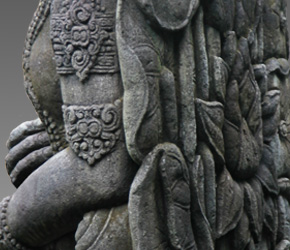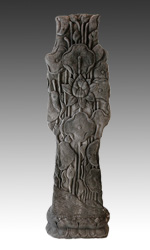Goddess Mahadevi
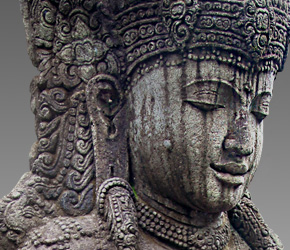 |
|
Mahadevi means “Great Goddess” in Sanskrit. It can also be translated as “Mother Goddess.” It is a term used to denote an all encompassing female deity. She is the consort or opposite of Deva, which is the all encompassing male deity. In essence, Devi is the core form of every Hindu goddess, the female manifestation of the Supreme Being and the energy that balances out the male aspect of the divine.
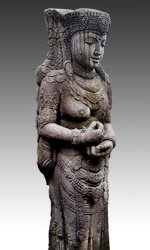 |
|
In Hinduism there is a concept called the Divine Masculine, and it is characterized by three male deities known as the Hindu Triad – Brahma, the creator; Vishnu, the preserver and protector of humankind; and Shiva, the destroyer. All three may be considered benevolent. For example, if a person is sick and Shiva destroys the illness; this is an essentially beneficial act. Mahadevi alone may be called the Divine Feminine, and represents the female counterpart to the male triad. She manifests as Durga, the divine mother or Creator; Lakshmi, Parvati and Saraswati, all “preservers” who enrich humankind; and Kali, the destroyer.
The concept of Devi also appears in Buddhism as well as Hinduism. She may appear as many different types of manifestations and under a variety of guises and names. In some forms she is benign and gentle; in others she is dynamic and ferocious; but in all she is helpful to her devotees. According to some scholars, she was incorporated into the Buddhist pantheon perhaps as early as the 3rd century B.C. – as the "Mother of Perfected Wisdom," the complete embodiment of the feminine principle. She is also known as the mother of Buddha or conversely, the "mother of liberation."
This statue of Mahadevi was sculpted in Java, Indonesia, where both Hinduism and Buddhism have a long history. Yet, before Buddhism or Hinduism made an entry into Indonesia, the people of the area were the worshipers of nature and its components, known as animists. Trees, stones and other natural objects were believed to have supernatural power. It wasn’t until the 2nd century A.D. that Hinduism began to make inroads into the region. A few centuries later, Buddhism emerged as the second great religion in the area and by the 8th and 9th centuries A.D. the largest Buddhist kingdom in South East Asia emerged in Java. It was known as the Sri Vijaya Empire and lasted until the 13th century.
During the Sri Vijaya Empire many Buddhist temples and shrines were constructed, and as time progressed, depictions of all deities became more refined. The style of this statue is distinct to Java and might be considered a beautiful example of classical Javanese art in what is called the Sri Vijaya style. It should be noted, this style was most strongly influenced by India. The Sri Vijaya Empire dominated the area through maritime power and is highlighted by the prevalence of Buddhist art. Nonetheless, it would be unfair to characterize this statue strictly as Buddhist since Mahadevi is clearly relevant to Hinduism and other spiritual disciplines.
Statues in the Sri Vijaya style are characterized by a very strong refinement and technical sophistication, and depictions of deities in this style continue to the present day. This statue shows Mahadevi crowned and wearing a full complement of jewels indicating her divine stature. Her hands form a cradling gesture referencing a mudra (hand position) called the Heart and Mind Calming Mudra, said to bring peace of mind. Of particular importance is the train of lotus flowers flowing from her crown and the lotus base upon which she stands. Throughout many cultures over time, the lotus has been a powerful image and a spiritual symbol. In both Hinduism and Buddhism, the lotus is considered sacred, symbolizing divine birth, purity, spiritual potential and development, the flowering of consciousness, and Bhakti, or love of God. The lotus base upon which Mahadevi stands is the symbol of the awakened mind, which is independent and self-generating. All in all, this statue stands as an enduring testament to the concept of the Divine Feminine.
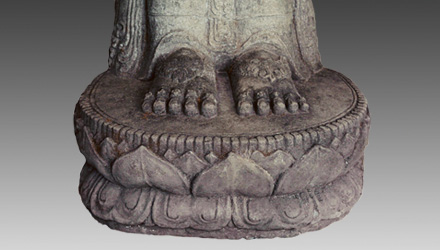
|
|
Download this Article: Mahadevi Goddess.pdf
